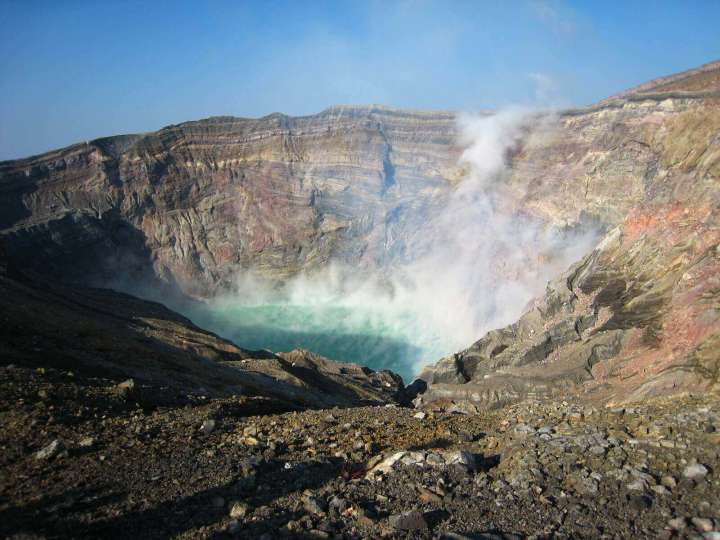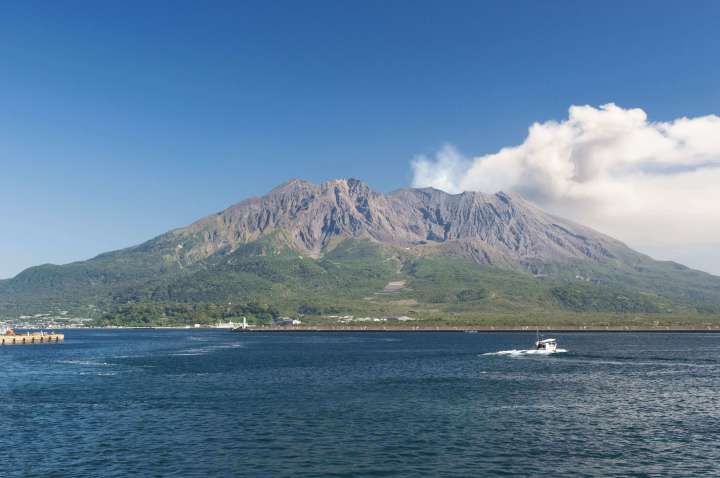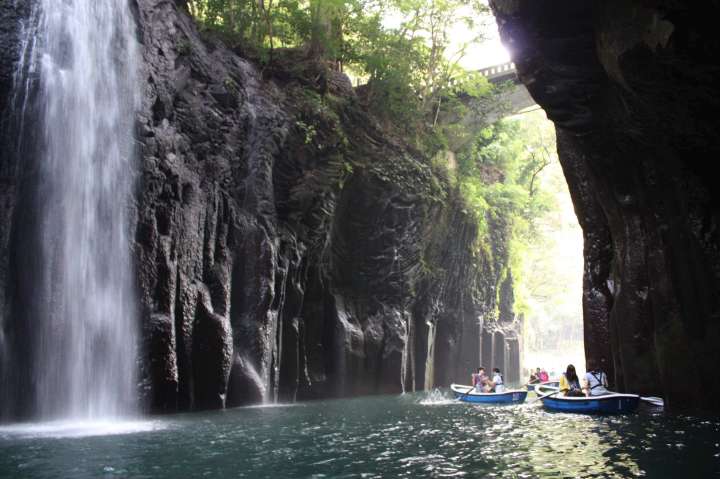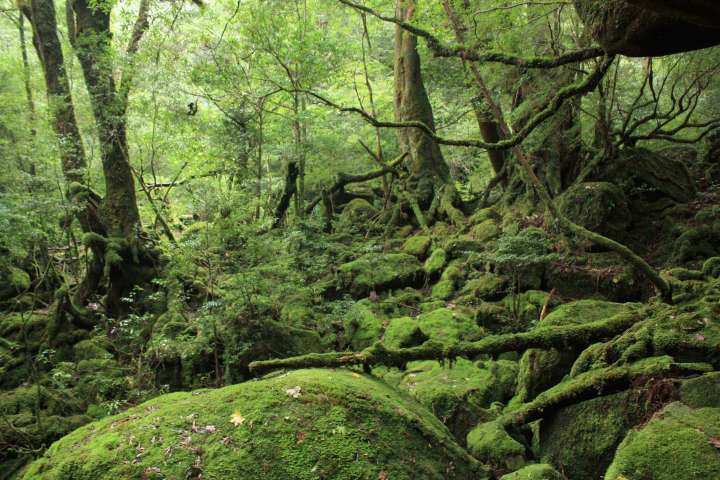
Story Nature in Kyushu by JNTO on 04 January 2018
Whether you’re into hiking, sightseeing or photography, Kyushu’s bountiful nature ensures that the scenery is never static. From conical volcanoes billowing with sulfur, to unique islands and scenic gorges, it’s a nature lover’s paradise.
Volcanoes
Kyushu is appropriately called the “Land of Fire”, as gigantic caldera volcanoes are omnipresent on the island.
Mt. Aso in Kumamoto Prefecture is an active volcanic area consisting of several peaks which sit in one of the world’s largest calderas. The most active of these peaks is Mt. Nakadake, whose crater continuously billows with volcanic gas. Until very recently you could actually see the smoky crater via a ropeway – the only place in Japan where you can see an active volcano this close – but a 1km no-entry zone is in effect after the 2016 eruption until further notice. You can see the cone from the lower ropeway station, or take a sightseeing helicopter to view the turquoise lake in the middle of the crater.

Another impressive active volcano is Sakurajima, located in Kinko Bay in Kagoshima Prefecture. This volcanic cone island billows smoke constantly, and minor eruptions often take place multiple times per day. Of the three main peaks, the Minami-dake is the most active. Although connected to the mainland via a small isthmus, most visitors take the ferry to Sakurajima.

At Kirishima Geopark, there are over 20 volcanoes. Hiking trails offer access to many of these, including the active Mt. Shinmoedake. The most popular is the route to the beautiful crater lakes of Rokkannon Miike and Byakushi in the Ebino Highlands. Another gem here is the Sekino-O Falls, one of Japan’s most picturesque falls, which can be viewed from a suspension bridge.

Takachiho Gorge
Between Oita and Kumamoto prefectures lies the Takachiho Gorge, a narrow chasm cut through the rock by the Gokase River. Precipitous volcanic basalt columns line the gorge which is punctuated halfway by the picturesque 17m-high Manai waterfall, one of Japan’s top 100 falls.
There are two ways to enjoy the gorge. The first is to row a boat down the calm river which offers a close up view of the cliffs and waterfall. The second is via a walking trail along the upper part of the gorge which is lined with cherry trees, azaleas and wisterias.

Islands off Kyushu
A number of smaller islands are easily accessible by ferry or plane from Kyushu’s coastal cities, including Hashima and Yakushima.
Tiny Hashima Island is nicknamed Gunkanjima (meaning “Battleship Island”) due to the way it “floats” in the ocean. Located about 20km from Nagasaki Port, it had over 5,000 residents when the island served as a coal mine. It was abandoned in 1974, creating an eerie atmosphere that was made famous by the James Bond movie Skyfall. Today, this World Heritage island can be visited on a day cruise from Nagasaki.

Yakushima is a subtropical island in Kagoshima, famous for its extensive cedar forest that contains some of Japan’s oldest trees, nicknamed yakusugi, some over 7,000 years old. Populated mainly by deer and monkeys, the most popular site on this mountainous island is Shiratani Unsuikyo which offers hiking trails through its moss-laden cedar groves that are the inspiration for the Studio Ghibli animated film, Princess Mononoke.

























































